Back in May as Oil prices corrected from the high $80s to the mid $70s, the energy sector provided a terrific buying opportunity for both long-term energy bulls and oil traders alike. Sentiment and positioning had been washed out on fears OPEC+ would increase production and unwind their voluntary cuts, all at a time when demand was set to rise, and inventory was drawn as we entered peak demand season in the northern hemisphere.
Oil prices have since rallied back to the mid-$80s as hedge funds and CTAs have re-entered the market en-masse following the overreaction to OPEC+’s planned production cut unwinds. But this rally has thus far played out on the anticipation of impending inventory draws through July and August as opposed to actual inventory draws, leaving crude oil prices in a somewhat vulnerable position.
We had a very bullish inventory draw of ~12m barrels last week. But, prior to this, inventory changes have been firmly in the bearish camp for both total crude oil and petroleum products, as well as crude oil itself for much of the past few months.

Crude oil inventories generally draw at this time of year. Ditto gasoline stocks. Until last week, overall inventories had been building at higher-than-normal rates, particularly for gasoline.
One culprit is likely to be crack spreads, which as we can see below, although they have stabilized since bottoming out in early June, have only modestly moved higher over the past month.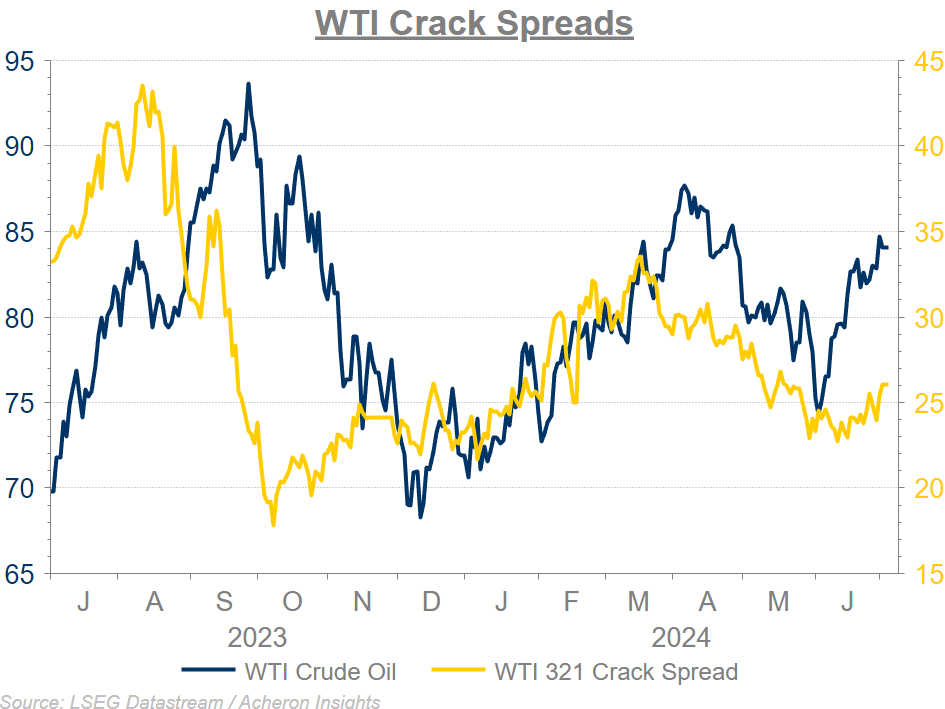
Even though crack spreads and refinery margins have spent the past month at their lowest levels since early 2023, this hasn’t stopped refinery throughput from climbing to well above seasonal averages following weather-induced refinery outages and an extended maintenance season earlier this year.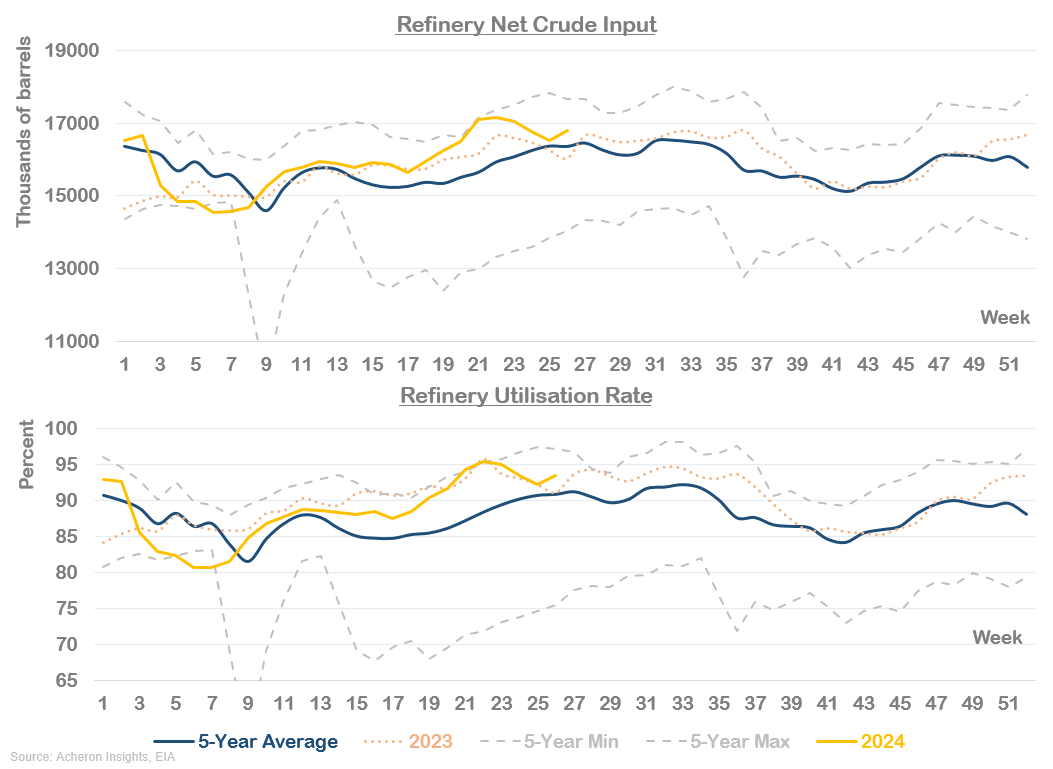
As a result, gasoline stocks, in particular, have been replenished at a higher-than-normal rate over the past quarter, along with overall petroleum and crude inventory. While demand has been relatively strong over the past month, it hasn’t been strong enough to offset increased refined product supplies.
As a result, for oil prices to remain at current levels and to avoid an unwinding of net-long oil futures positioning, we likely need to see a combination of:
- Cracks spreads continue to rally in line with oil prices, which should help incentivize refiners to sustain crude throughout and draw down crude inventories
- Refined product demand to continue to rise during the favorable time of the year consumption-wise, and
- Refined product inventories to draw in addition to crude oil inventory draws.
If we don’t see overall inventory draws and cracks spread roll over, oil prices are likely to sell off back to the mid-$70s level, with energy stocks to follow suit.
In terms of the outlook for demand over the next six to 12 months, though it is incredibly difficult to predict, I continue to lean toward the bullish side of the equation. Both oil prices and a large part of demand does move in-line with the global business cycle, as we can see below.
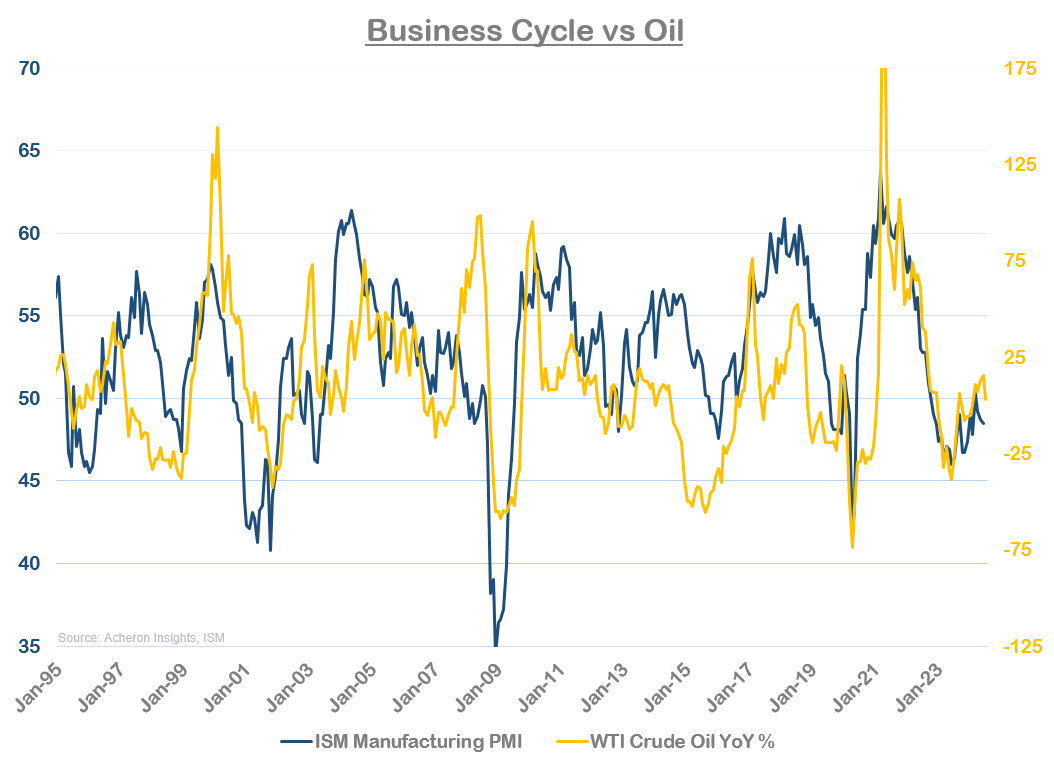
And, as regular readers can attest to, the leading indicators of the US business cycle continue to suggest economic growth, and the manufacturing cycle is set to expand over the coming six to 12 months.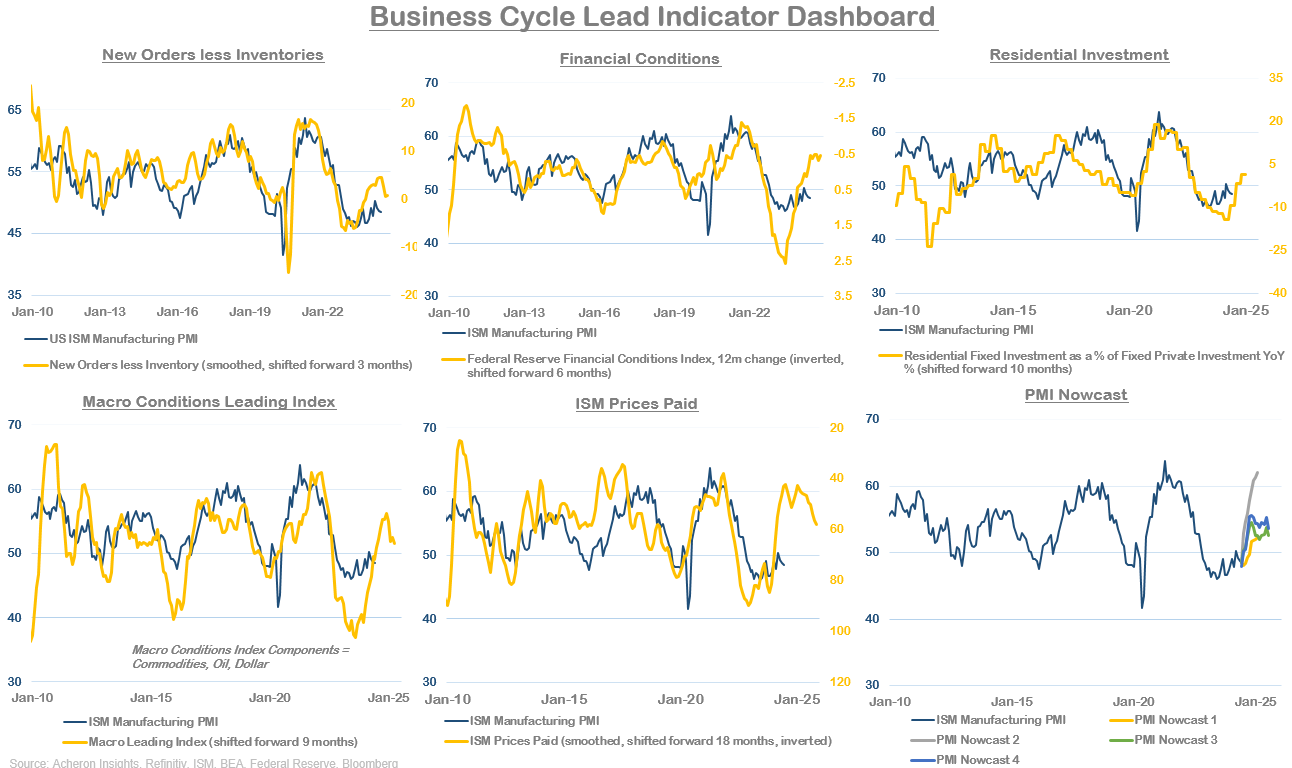
The same can be said for the global business cycle, as we can see below.
So, while it is definitely possible we see economic disappointment in the short term, an upswing in the global manufacturing sector will help the demand picture for oil and refined products from a cyclical perspective.
Turning our attention toward investor positioning, as I have mentioned, managed money positioning in WTI (made up of hedge funds and CTAs) has spiked to levels generally indicative of short-term tops in prices. On the flip side, we have seen big positioning unwinds in gasoline and diesel futures as prices for both have collapsed in recent weeks.
This leaves convexity likely skewed to the downside for oil and to the upside for refined products. As a result, should the fundamentals of the oil market disappoint, oil prices are almost certain to sell off.
Supporting the bearish thesis for oil prices in the short term is seasonality. July through August are generally weaker months for price action.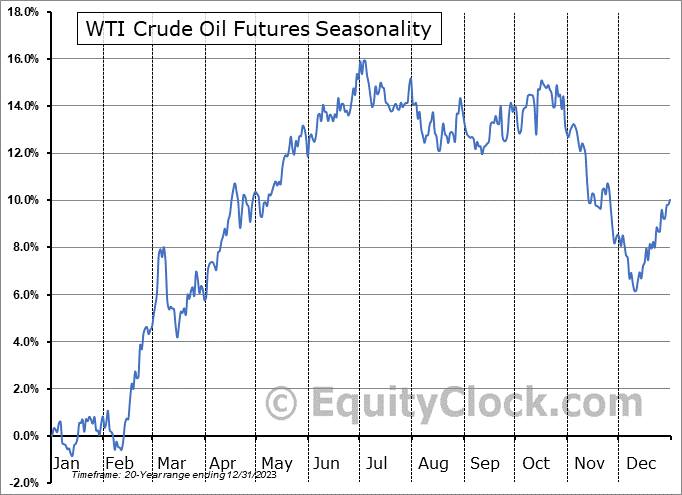
We have also seen WTI time spreads spike to levels that generally align with short-term price tops.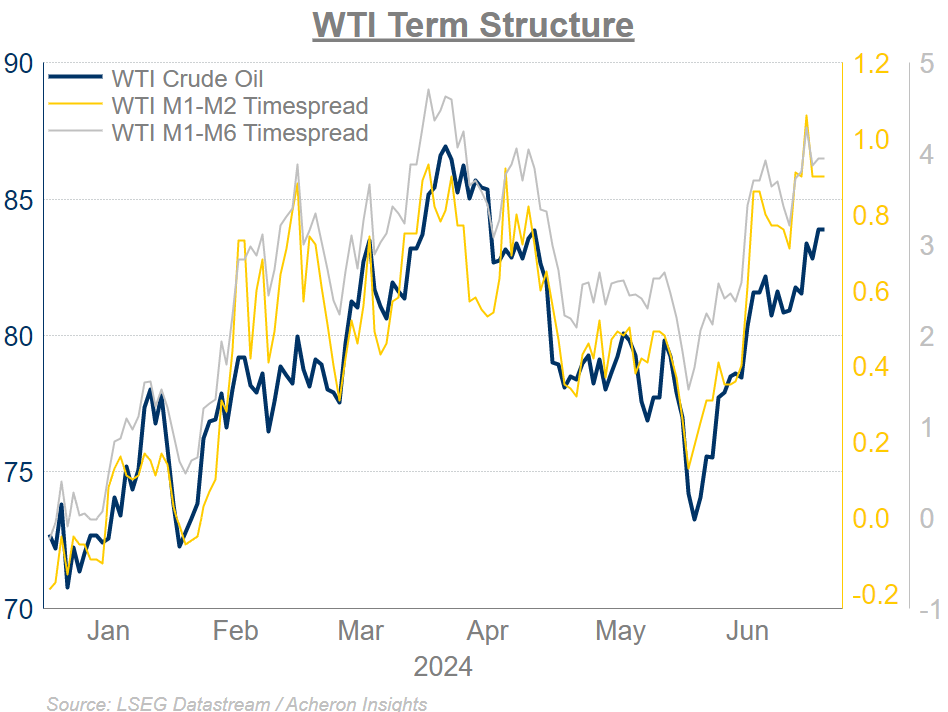
Though a backward-dated term structure is indeed a bullish sign for oil, when the spread between the front month and dated futures spike to such a significant degree, this tends to suggest the rally is running out of steam.
The below study from SentimenTrader illustrates this well.
A Quick Word on OPEC+ and US Oil Production
Looking at the bigger picture now, it is interesting to note that US production has been flat for much of the past six to nine months. Production saw a big ramp-up last year, which I believe was at least partly due to private producers maximizing production to entice takeovers. In the months since, production growth has stalled. While this recent plateau doesn’t tell us much in isolation, given I reside in the camp of US tight oil production likely nearing its peak at some point this year or next, this is an interesting signpost.

From the OPEC+ side of things, we did see the cartel lay out their plans to bring back part of their voluntary cuts. Beginning in October this year, 2.2 mm b/d in production cuts will start to be unwound progressively over the following 12 months, subject to market conditions. Given where current OPEC+ production lies and how these production increases will occur slowly over a 12-month period, I would be surprised if this were to have a material impact on oil prices, barring a recession.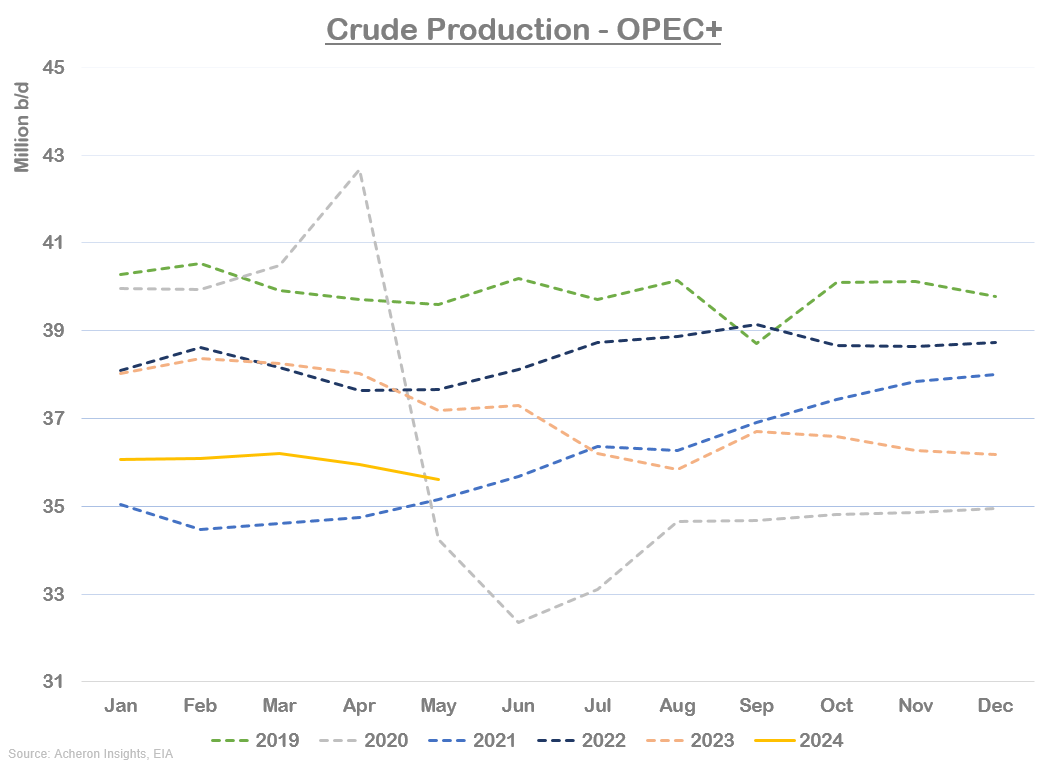
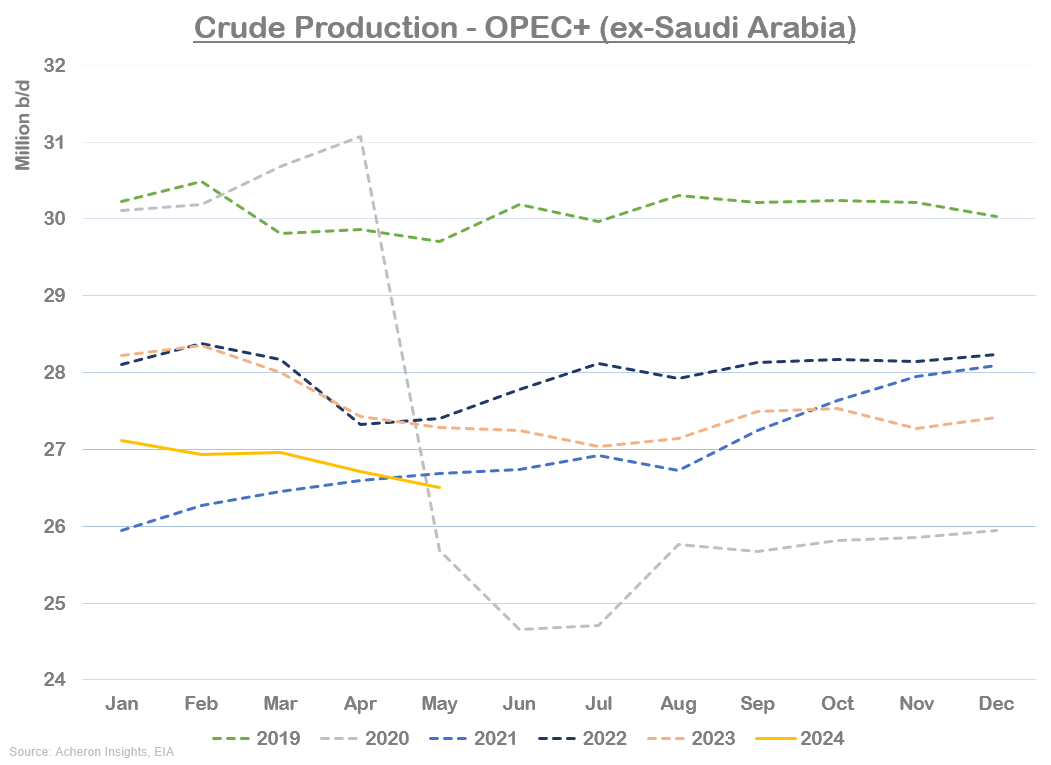
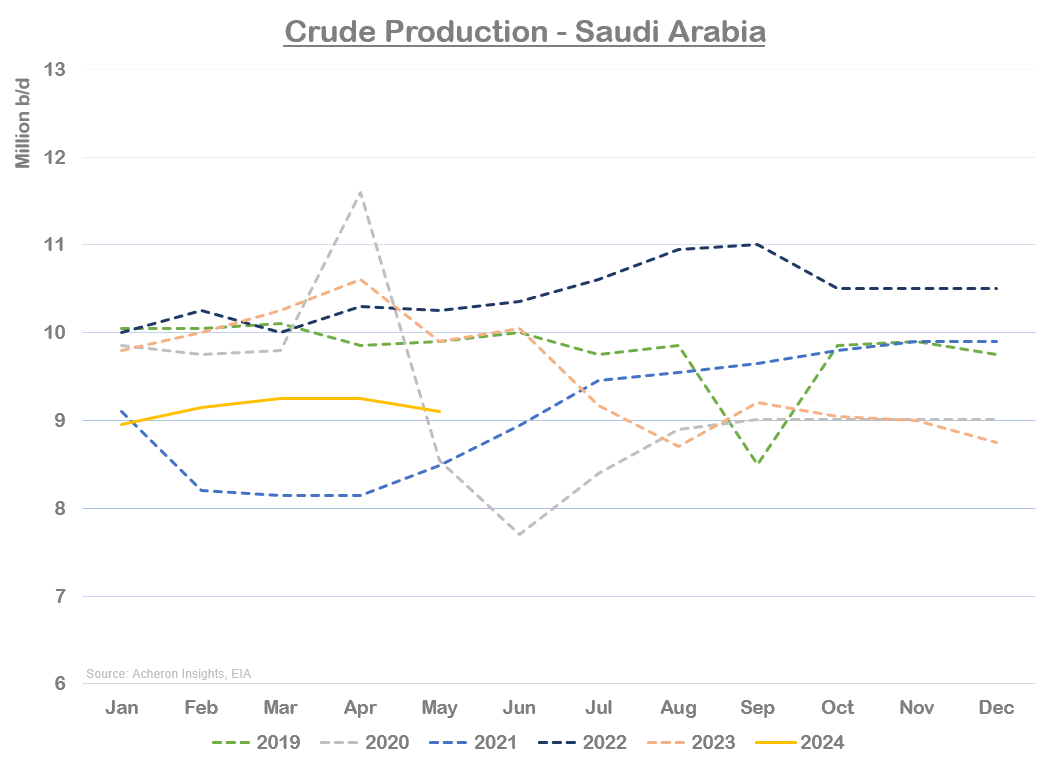
It is also important to remember that OPEC+ production cuts have hardly translated into a reduction in global supply. Outside of August last year and June this year, OPEC+ exports have been at or near average levels seen before production cuts. What’s more, the drop in June exports can largely be attributed to Saudi Arabia keeping barrels domestically to feed its power plants during hot weather as energy demand is at seasonal highs, in addition to Hajj, the annual Islamic pilgrimage to the Muslim holy sites of Mecca and Medina. So, perhaps the OPEC+ story isn’t quite the story it’s cut out to be. Time will tell.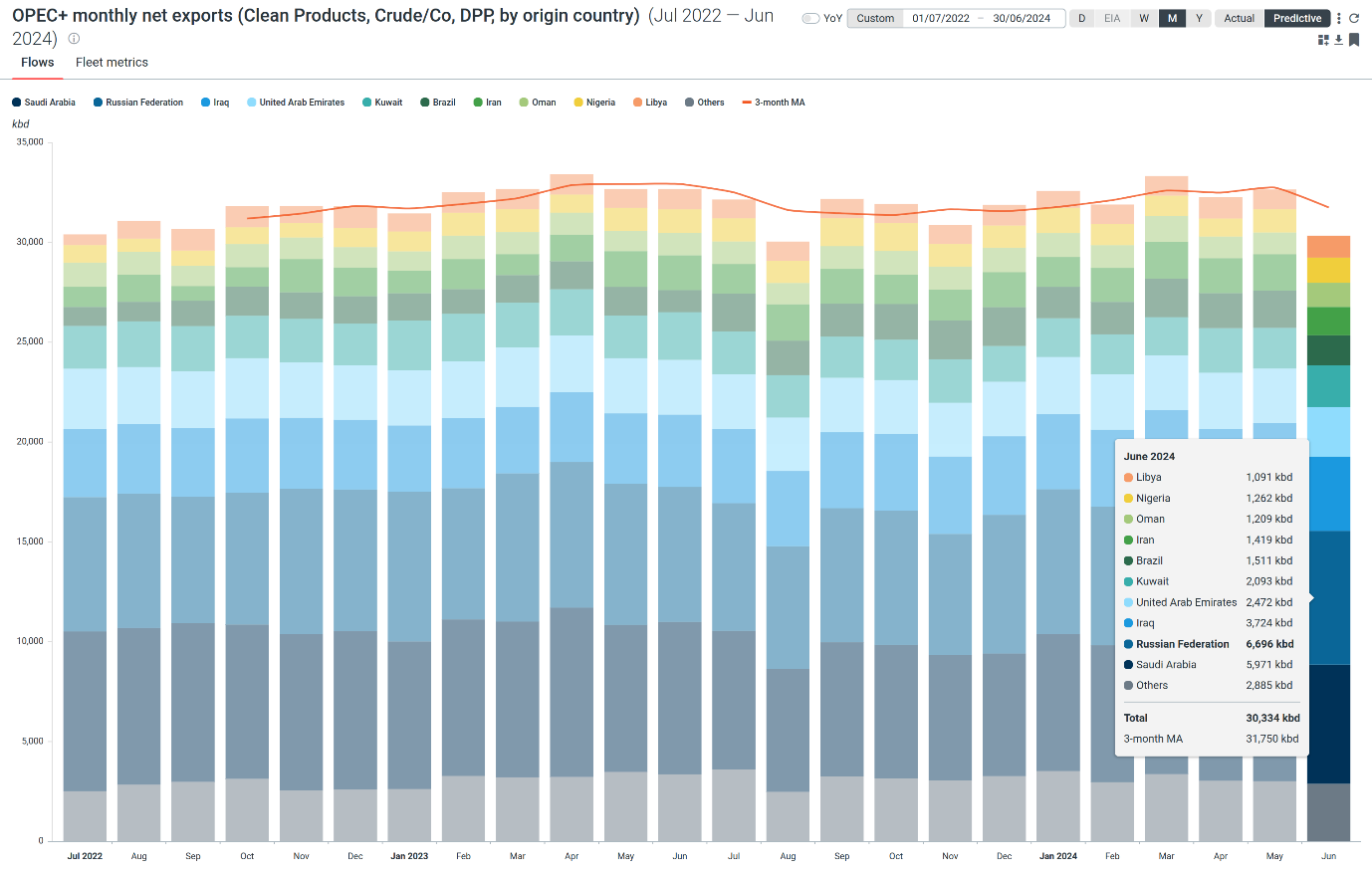
Source: @BenniKim
Conclusion and Key Takeaways
- Oil prices have rallied nicely following the overdone sell-off in May.
- Hedge funds and CTAs have been buying oil and fueling this rally on the expectation of future inventory draws through the summer months.
- This leaves positioning stretched to the upside, so for oil prices to continue to rally, we must see consistent inventory draws in July through August. Otherwise, oil prices will sell off. Crack spreads will be a key driver of this dynamic.
- Even if fundamentals are bullish, there remains a $85–90 ceiling on oil prices in 2024, given the election, and the US production story is unlikely to be a major factor for 2024. Short-term growth risks may also play a role here.
- The medium-term outlook beyond 2024 remains relatively robust, so long as we don’t have a major recession. The outlook for demand remains positive as the manufacturing cycle picks up globally. At the same time, OPEC+ production increases are likely to be a non-factor, given the slow pace at which they are being unwound. US production growth over the next 12-24 months is likely the key determinant of whether we do eventually see a big rally in oil prices and energy stocks.
